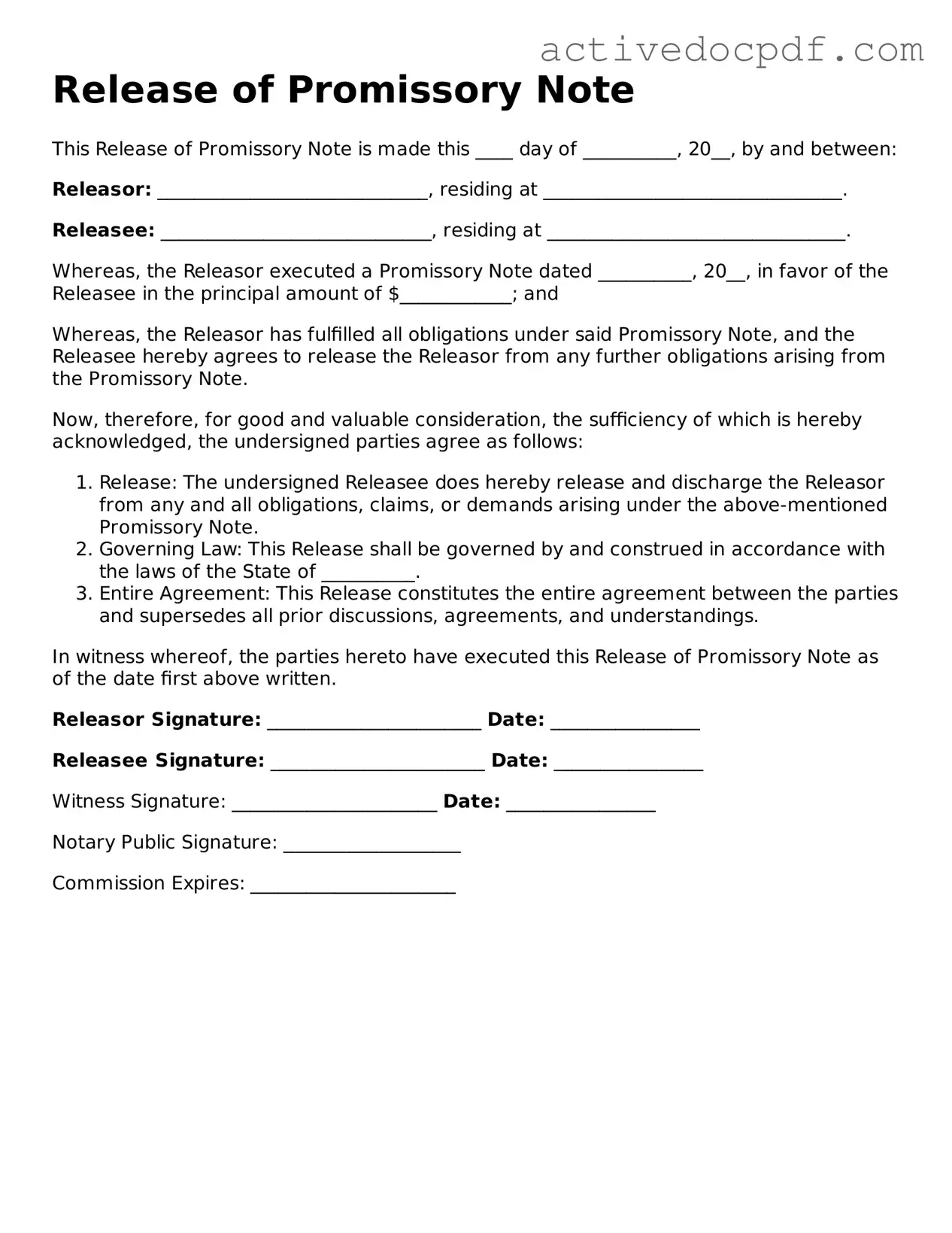A Release of Promissory Note form is a document used to formally acknowledge that a borrower has fulfilled their obligations under a promissory note. Once the borrower has repaid the loan in full, this form serves as proof that the lender releases any claims to the debt.
You should use the Release of Promissory Note form once the borrower has paid off the loan. This is important to prevent any future claims against the borrower regarding the debt. It provides clarity and peace of mind for both parties involved.
The form should be signed by both the lender and the borrower. The lender confirms that the debt has been satisfied, while the borrower acknowledges the release of the obligation. In some cases, a witness or notary may also be required to ensure the document's validity.
The form typically includes:
-
The names and addresses of both the lender and the borrower
-
The original loan amount and the date of the promissory note
-
A statement confirming that the loan has been paid in full
-
The date of the release
-
Signatures of both parties
Yes, once signed, the Release of Promissory Note form is legally binding. It acts as a formal agreement between the lender and borrower, ensuring that the lender cannot make any further claims on the debt. It is advisable to keep a copy for your records.
While you can create your own form, it is recommended to use a standard template or consult with a legal professional. This ensures that all necessary information is included and that the document complies with state laws.
If you lose the signed form, you can request a duplicate from the other party. It’s a good idea to keep multiple copies in a safe place. If necessary, you may also consider drafting a new release and having both parties sign it again.
Generally, there are no fees for simply completing and signing the Release of Promissory Note form. However, if you choose to have the document notarized or filed with a government agency, there may be associated costs. Always check local regulations for any specific requirements.
What should I do if I have more questions?
If you have additional questions or need assistance, consider reaching out to a legal professional. They can provide guidance tailored to your specific situation and ensure you understand the implications of the release.
